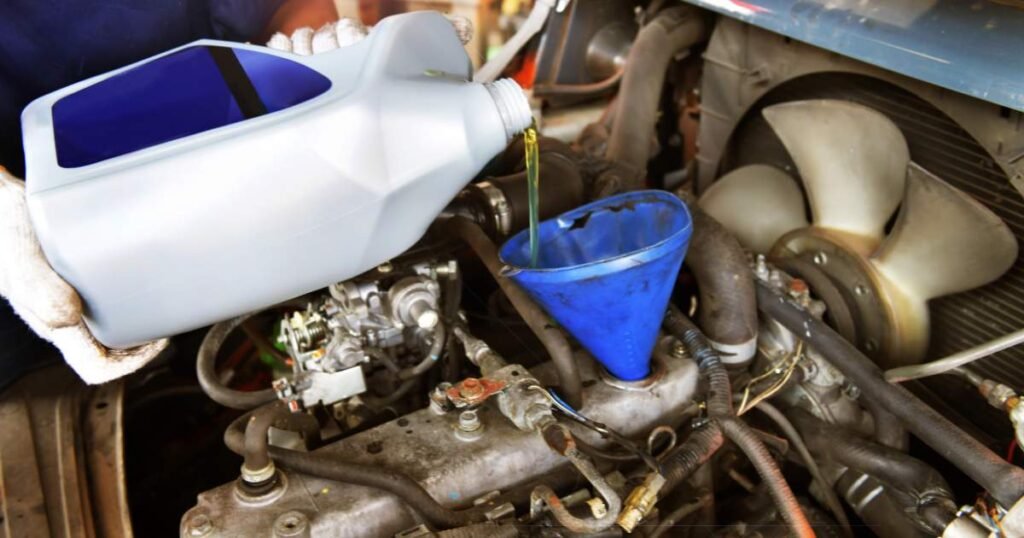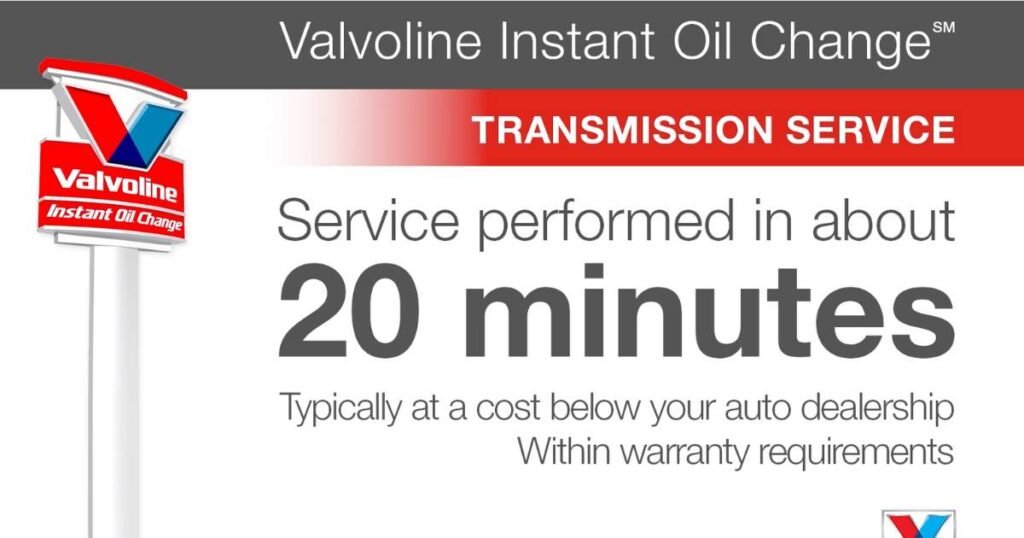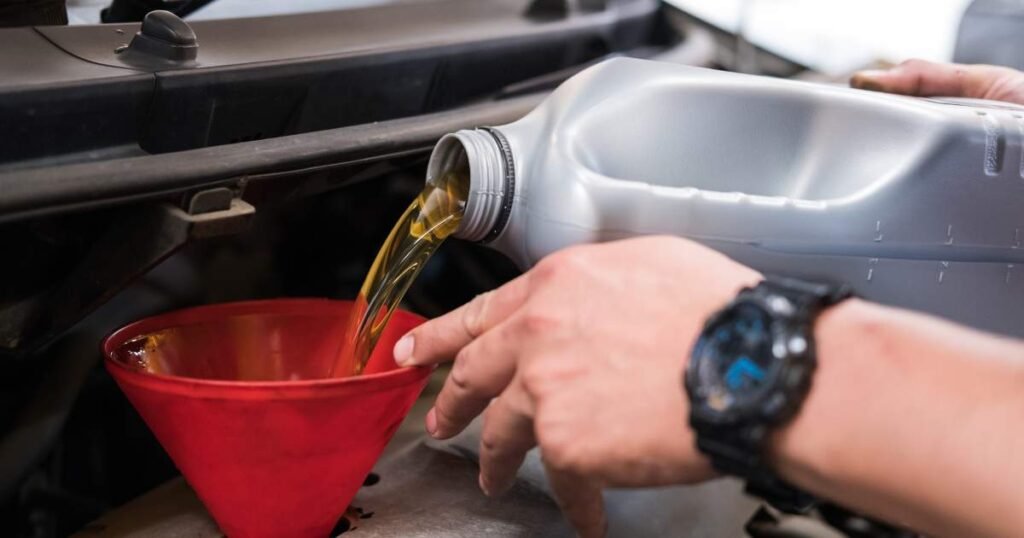Transmission fluid plays an important role in your vehicle’s transmission system. It lubricates the gears and ensures smooth shifting. Over time, this fluid can degrade and become contaminated, leading to potential transmission problems.
Regular transmission fluid changes are the best way to maintain performance and extend the lifespan of your transmission.
Valvoline Instant Oil Change offers a convenient and reliable option. But, how much does a transmission fluid change cost at Valvoline?
Table of Contents
What is the Transmission Fluid Change Cost At Valvoline?
Valvoline’s typical transmission fluid change cost ranges between $150 to $300 or more. This price includes the new fluid, filter, and labor costs. However, several factors influence the final price.

What Key Factors Affecting Transmission Fluid Change Costs?
Several factors can influence the cost of a transmission fluid change at Valvoline, including:
- Vehicle Type: Transmission fluid requirements and labor costs vary depending on your vehicle type.
- Method of fluid change: A complete fluid change involving dropping the transmission pan typically costs more than a simple fluid flush.
- Transmission Fluid Type: Different vehicles require specific types of transmission fluid, which can affect pricing.
- Location: Prices may differ slightly across different Valvoline service centers due to regional labor costs and supply variations.
- Additional Services: The overall cost will increase if you opt for additional services beyond a basic fluid change, such as a transmission flush or filter replacement.
What is the Transmission Fluid Change Costs at Popular Auto Centers?
Here’s a breakdown of transmission fluid change costs at some leading auto service providers:
- Jiffy Lube: $135.99 for automatic transmission fluid exchange, $49.99 for manual transmission service
- Valvoline: $119.00 to $179.00, depending on fluid type and filter replacement
- Walmart: $59.88 to $100 for parts and fluid (service not offered)
What are the Benefits of Transmission Fluid Change at Valvoline?
Regular transmission fluid changes offer numerous benefits, including:
- Convenience: Quick service, often completed in about 20 minutes
- Affordability: Competitive prices compared to dealerships
- Expertise: Certified technicians
- Savings potential: Up to 50% savings versus dealerships
- Potential to prolong transmission life

What is Transmission Fluid Change?
Smoother shifting happens when clean transmission fluid ensures gear changes are seamless. This makes driving more enjoyable.
Proper maintenance extends the life of your transmission. This can save you from costly repairs later.
Clean transmission fluid improves fuel efficiency. It reduces friction within the transmission system.
Regular fluid changes are preventative maintenance. They help avoid potential transmission problems, saving you time and money on unexpected repairs.
When to Get Your Transmission Fluid Changed?
Most vehicle manufacturers recommend changing transmission fluid every 30,000 to 60,000 miles. It’s important to check your vehicle’s owner’s manual for the most accurate maintenance schedule.
Notice any signs of transmission trouble? Difficulty shifting gears, slipping gears, or unusual noises? Check your transmission fluid as soon as possible.

What are the Signs You Need a Transmission Fluid Change?
Difficulty shifting gears can indicate worn or contaminated fluid. Hesitation or jerking when shifting gears is a clear sign of this problem.
Slipping gears is a serious issue that requires immediate attention. If your transmission slips out of gear, don’t ignore it.
Rough or noisy shifting might mean there are fluid issues. Grinding or whining noises during shifting are common indicators.
Visible fluid leaks under your vehicle should be repaired promptly. Leaking fluid is not something to overlook.
Dark or burnt-smelling fluid on the dipstick means it’s time for a change. Check your dipstick regularly to catch this early.
How do you check Transmission fluid?
Just as you regularly check your engine oil level, you should also check your transmission fluid level. It’s a simple process you can do while your car is running.
Locate the transmission dipstick. Your owner’s manual can help if you’re unsure where to find it.
Pull out the dipstick, wipe it clean, and then reinsert it.
Remove the dipstick again to get an accurate fluid level reading.
If the fluid level is below the minimum line, looks dark, or smells burnt, it’s time for a replacement.
How to Replace Transmission Fluid?
There are two methods: one is automatic transmission fluid change, and the other one is manual. Let’s explore both to see how they work.
Method 1: Changing Automatic Transmission Fluid
Replacing automatic transmission fluid involves draining the old fluid, replacing the filter, and adding new fluid. Here’s a detailed breakdown of the steps:
- Safety first: Park your car on a level surface, make the parking brake, and block the wheels.
- Raise the car: Use a jack stand or a lift to raise the vehicle safely.
- Prepare for draining: Place a tarp and a catch pan under the transmission to collect the old fluid. Wear gloves and safety goggles for protection.
- Access the pan: Locate the transmission oil pan and carefully remove the bolts to drain the fluid.
- Inspect and clean: Examine the oil pan and gasket housing for any signs of damage. Clean them thoroughly using a cleaning solvent.
- Replace the filter: Remove the old transmission filter and replace it with a new one.
- Reattach the pan: Apply a new gasket to the transmission pan using oil-soluble grease. Secure the pan back in place and tighten the bolts in a crisscross pattern.
- Add new fluid: Use a funnel to lower the car and add fresh transmission fluid through the dipstick tube.
- Warm up the engine: Let the car run for a few minutes to warm up the engine and transmission.
- Recheck fluid level: Use the dipstick to verify the fluid level and add more if needed.
- Inspect for leaks: Turn off the car and check for any leaks from the transmission pan.
Method 2: Changing Manual Transmission Fluid
Changing the manual transmission fluid is generally simpler than replacing the automatic transmission fluid. Here’s a brief overview of the steps:
- Raise the car: Safely jack up the vehicle to access the transmission.
- Locate the fill plug: Find the fill plug on the upper end of the transmission pan.
- Drain the fluid: Loosen the fill plug to drain the old fluid into a catch pan.
- Replace the plug and washer: Once the fluid is drained, replace the fill plug with a new washer.
- Add new fluid: An oil pump adds fresh transmission fluid through the fill hole.
- Replace the filter bolt: Tighten the filter bolt with a torque wrench.
What happens if I don’t change my transmission fluid?
Failure to change transmission fluid can lead to various problems, including:
- Slipping gears
- Gear grinding
- Transmission overheating
- Premature transmission failure
What are the operating hours for transmission fluid change at Valvoline?
The operating hours for transmission fluid changes at Valvoline vary depending on the specific location. However, most Valvoline Instant Oil Change locations follow these general hours:
- Mon-Fri: 8:00 AM to 9:00 PM (Eastern Time)
- Saturdays: 8:00 AM to 8:00 PM (Eastern Time)
- Sundays: 9:00 AM to 5:00 PM (some locations may be closed on Sundays)
Final Verdict
Choosing the right place for your transmission fluid change depends on your budget, needs, and preferences. Valvoline offers a convenient and reliable option, with prices ranging from $119.00 to $179.00, depending on the service and your vehicle.
Remember, regular maintenance is key to a healthy transmission, so invest wisely and keep your gears shifting smoothly for miles to come.
Relevant: Does Walmart Change Transmission Fluid?
FAQs
Can I change my transmission fluid myself?
While changing transmission fluid at home is possible, it’s often a complex procedure that’s best left to professionals. Incorrect fluid levels or improper techniques can lead to severe transmission damage.
How can I save money on a transmission fluid change?
Check for coupons or specials offered by auto service centers. Also, consider purchasing your own transmission fluid and filter and bringing them to the mechanic for installation.
How much should a transmission fluid change cost?
It depends on your car, the service type, and local rates. Expect $119.00 to $179.00 for a basic drain and refill, $250-$400 for a power flush, and $50-$100 extra for premium fluids.
Does Valvoline change transmission fluid?
Yes, they offer various services like basic drain and refills, power flushes, and high-performance fluid upgrades.
Is Valvoline a good transmission fluid?
They offer a variety of good fluids, but the best choice for your car depends on its make and model. Consult your manual or a mechanic for specific recommendations.
Are transmission fluid changes worth it?
Absolutely! Regular changes ensure smooth shifts, prevent overheating, and extend your transmission’s life, saving you money in the long run.


![Does Walmart Change Transmission Fluid [Updated]](https://autoroadpro.com/wp-content/uploads/2023/12/Does-Walmart-Change-Transmission-Fluid-Updated-150x150.jpg)